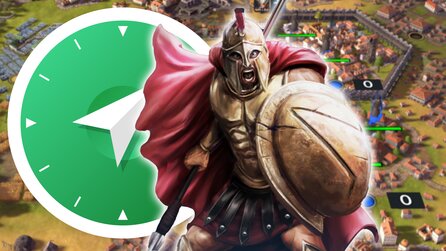Perfect effects
GameStar: Due to its mathematical correctness, ray tracing could make games look more realistic, e.g. perfect lighting, shadowing, refractions and reflections. Current game engines, even the upcoming Unreal 3 engine, use tricks for doing such effects. Do we need a transition from rasterization to ray tracing for perfect 3D graphics?
Kirk:
First of all, I would say that simple ray tracing is not "perfect lighting". Simple ray tracing traces a single ray toward each point light, which results in ugly, hard edged shadows. To get more realistic (and, I will say, still not "perfect") lighting, multiple rays must be traced toward each area light, as well as toward other surfaces which interreflect light. This is much more time consuming. Ray tracing is just one algorithm for solving a large, complex integral equation which researchers have called "the rendering equation". Simple ray tracing attempts to solve the equation by taking a few estimates. Path tracing and stochastic ray tracing increase the quality of the solution by using more estimates and adding some randomness to the process.
I believe that a lot of game engines already incorporate a combination of techniques including ray tracing and radiosity in their rendering paths.
Slusallek:
As mentioned before ray tracing is certainly much more "perfect" than rasterization. For example, look at our partners from the automotive industry like Volkswagen and Audi. They need to reliably visualize the final look of the car in order to make far-reaching decisions as early as possible in the design process. They don't need "nice images", they
need correct images they can trust. With rasterization this has not been possible even after they tried hard for many years.
After evaluating ray tracing for some time, a large German car company has just decided to buy a complete visualization center for production use from our spin-of inTrace GmbH. It uses realtime ray tracing on a PC cluster instead of the usual rasterization hardware. Image quality, the ability to directly render the CAD data of entire cars with tens of millions of polygons, and reliable visual results have been the main arguments for them.
While the requirements of gaming are probably not as high as in the automotive industry, having the same features would not hurt. Indeed, many games are already trying to add some of these features but this is difficult to do in realtime due to the limitations of today's hardware.
We have already shown many of the advanced rendering features such as indirect lighting (using photon maps and stochastic Monte-Carlo lighting simulation) or volume rendering running in realtime using our software ray tracer. While we already have a complete realtime ray tracing framework for many application domains there still remains a lot of work
to be done to really exploit all its advantages.
However, using a PC cluster is certainly not acceptable for gaming. Some hardware support will be required to put ray tracing onto a PC graphics card that fits into everyone's PC. But a prototype of such hardware is already working in our labs.
While I believe that ray tracing is certainly the better platform for next generation graphics, it is really difficult to predict how fast it might get adopted by industry. We are already talking to hardware






Nur angemeldete Benutzer können kommentieren und bewerten.
Dein Kommentar wurde nicht gespeichert. Dies kann folgende Ursachen haben:
1. Der Kommentar ist länger als 4000 Zeichen.
2. Du hast versucht, einen Kommentar innerhalb der 10-Sekunden-Schreibsperre zu senden.
3. Dein Kommentar wurde als Spam identifiziert. Bitte beachte unsere Richtlinien zum Erstellen von Kommentaren.
4. Du verfügst nicht über die nötigen Schreibrechte bzw. wurdest gebannt.
Bei Fragen oder Problemen nutze bitte das Kontakt-Formular.
Nur angemeldete Benutzer können kommentieren und bewerten.
Nur angemeldete Plus-Mitglieder können Plus-Inhalte kommentieren und bewerten.